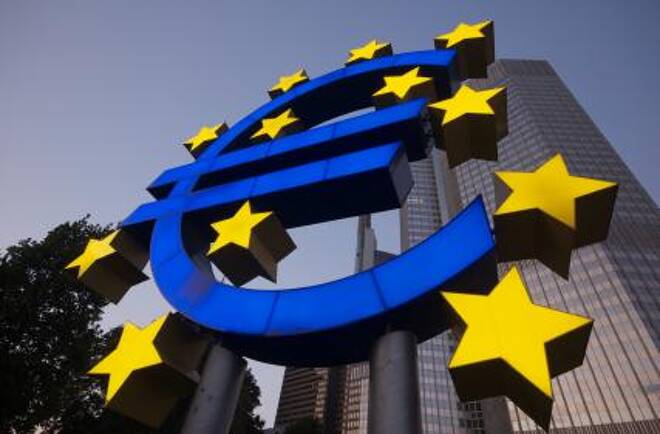Advertisement
Advertisement
EUR/USD Set to Finish Week Higher
By:
The EUR/USD is set to close the week higher. The better close is not because of an improving Euro Zone economy, but rather position adjustments by short
The stronger tone for the EUR/USD was set earlier in the week as weaker U.S. economic data triggered a massive short-covering rally, taking the Forex pair to its highest level since September 23. Contributing to the huge rally was the grossly oversold Euro and the extremely overbought U.S. Dollar. This week’s rally may be an indication that investors are shifting a little out of the dollar and back into the Euro.
The Euro rallied versus the dollar after the New York State Manufacturing Index came in at 6.17, well below the estimate of 20.50. The Producer Price Index also came in below expectations at 1.6% in September. Traders were looking for a reading of 1.8%.
Lower-than-expected U.S. Retail Sales also contributed to the weakness by posting a reading of -0.2%. Analysts had expected growth of 0.3%.
Some of the gains in the EUR/USD were capped amid concerns about sovereign debt issues in Italy, Spain and Portugal. These fears triggered a move in sovereign yields not seen since 2010. As fear set in, global investors once again pressured global equity markets.
The explosion in periphery bond yields is just another sign that Europe is still vulnerable to a financial crisis. The worse the crisis gets, the more aggressive the European Central Bank will have to be with its quantitative easing plans. This will be bearish for the EUR/USD because QE tends to flood the market with cash.
The GBP/USD may finish the week flat or a little better.
Earlier in the week, the GBP/USD fell after the U.K. government released weaker-than-expected inflation data. U.K. CPI data came in at 1.2%, missing the forecast of 1.4% and hovering just 0.1% above its September 2009 low. The weak economic data suggested the Bank of England will likely use this data to delay an interest rate hike.
Helping the Sterling to recover from the weak U.K. CPI data was better than expected news about the jobs situation. This week it was reported that the U.K. unemployment rate fell to 6% in September, its lowest level in six years. Traders were looking for a decline to 6.1%.
The weak U.S. economic news triggered a steep drop in the U.S. Dollar to the benefit of the dollar-denominated gold market. December Comex Gold rallied to $1250.30, its highest level since September 11.
Despite the rally, the trend is still down in gold, meaning traders still have confidence in the U.S. economy and still believe the Fed is moving closer to hiking interest rates. This week’s rally reflected short-covering, profit-taking and position-squaring because of the possibility the Fed will turn softer on the economy and its plans to raise interest rates.
December Crude Oil broke through the psychological $80.00 level while reaching its lowest level since April 2013. Overproduction by the U.S., Russia and Saudi Arabia are being cited as the main reasons for the sell-off. The U.S. is producing more because of drilling improvements. The Russians are selling to raise cash because of the economic sanctions imposed on them by Europe. Saudi Arabia decided to cut prices to Europe rather than production. The Saudi feel comfortable with $80.00 crude, but may still cut production if persuaded by other OPEC members.
Low demand should also be factored into the supply equation besides the high production. The lower demand is being caused by the weakening global economy. Demand is down in the Euro Zone. Growth is slowing in China and the future of U.S. economic growth is becoming a concern.
About the Author
James Hyerczykauthor
James is a Florida-based technical analyst, market researcher, educator and trader with 35+ years of experience. He is an expert in the area of patterns, price and time analysis as it applies to futures, Forex, and stocks.
Did you find this article useful?
Latest news and analysis
Advertisement
